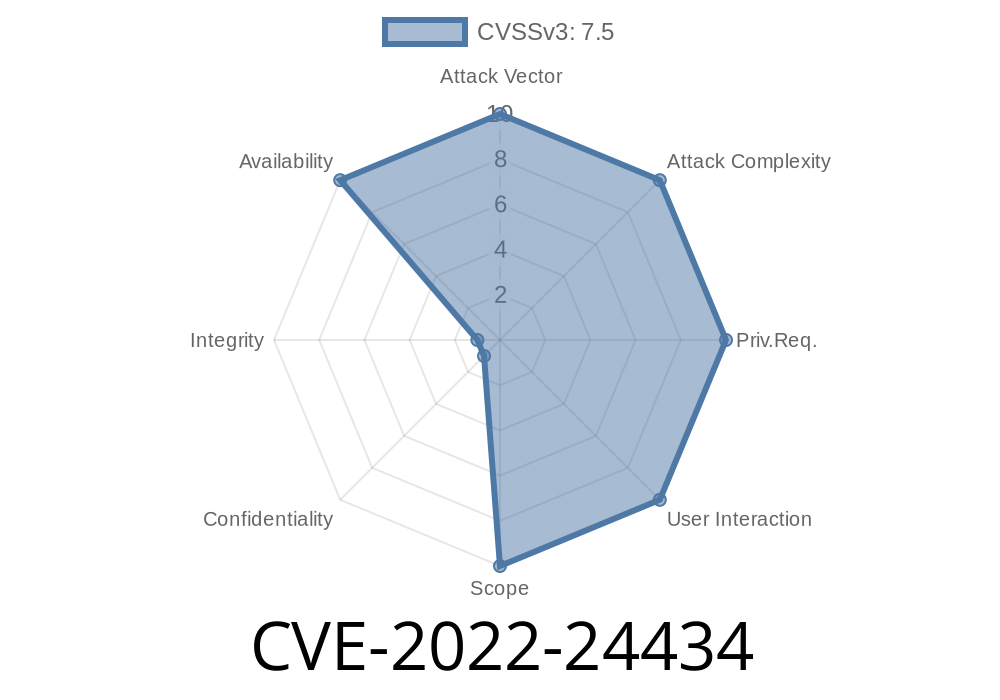Dear developers and security enthusiasts,
A significant security vulnerability, documented under the identifier CVE-2022-24434, has recently been discovered. This issue affects all versions of the package dicer. In this post, we will take a close look at this vulnerability, explore the exploit details, and provide references to help you understand and mitigate the risks.
Package Affected: dicer
Vulnerability Type: Denial of service (DoS)
Severity: High
Background
dicer, the widely used Node.js package for multipart parsing, is an essential component in many web applications. Unfortunately, it has been discovered that a malicious attacker can exploit the vulnerability within this package to trigger a DoS attack by crafting a specifically modified form and submitting it to the server repeatedly. With each payload sent, this vulnerability causes the Node.js service to crash and hinder its availability to users.
Exploit Details
To exploit this vulnerability, an attacker crafts a modified form containing a malicious payload designed to trigger the DoS attack in the dicer package. Upon submission of this form to the server, the Node.js service crashes. When an attacker repeatedly sends the malicious payload, the service is forced to crash continuously, ultimately causing severe disruption to its availability.
Here is an example of a code snippet that demonstrates this vulnerability
const Dicer = require('dicer');
const RepeatedFormPayload = 'multipart-form-data modified payload here...';
function submitModifiedForm() {
const dicer = new Dicer();
dicer.on('error', (err) => {
console.error('An error occured:', err.message);
});
// Simulate the submission of the modified form to the server
dicer.write(Buffer.from(RepeatedFormPayload, 'ascii'));
}
// Attacker sends the payload repeatedly
for (let i = ; i < 100; i++) {
submitModifiedForm();
}
Mitigation
As of now, there is no official patch available for this vulnerability. However, developers should closely monitor the package repository for updates addressing this issue. In the meantime, consider implementing additional security checks within your application to validate incoming form data, which can help mitigate the inherent risks associated with this vulnerability.
References
- CVE-2022-24434 in the CVE List
- Official Dicer Repository
In conclusion, CVE-2022-24434 is a critical security vulnerability within the dicer package that leaves Node.js services vulnerable to DoS attacks. It is crucial that developers stay informed and take appropriate action to protect their applications against this threat. Keep an eye on the package repository for any updates addressing this issue and exercise caution when handling incoming form data.
Timeline
Published on: 05/20/2022 20:15:00 UTC
Last modified on: 06/07/2022 02:04:00 UTC
